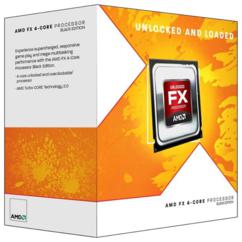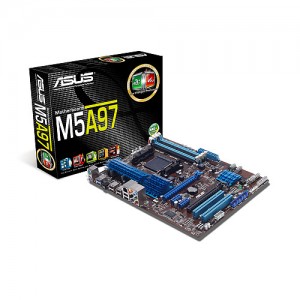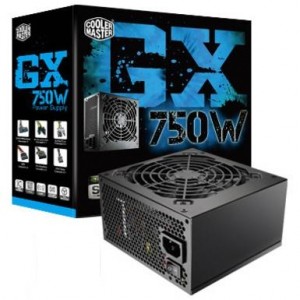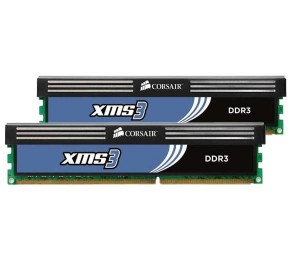-
-
products
-
resources
-
support
-
company
-
Upgrading a PC from Scratch – Walkthrough – Part 1
By Steve Horton August 13, 2012assembling, cpu, graphics card, hard drive, motherboard, upgradeNo CommentsUpgrading a PC from scratch
I recently had occasion to upgrade most of my desktop PC. It was running terribly. Even basic Web browsing took an eternity, never mind games, graphics applications or anything at all.
My existing PC was a little under four years old: an AMD Phenom II X2 550 with a Radeon HD 4600 graphics card.
So I decided to go nuts and get a new motherboard, CPU, power supply, graphics card and new memory. But I wanted my budget to be $500, no more.

Why Upgrade?
You may know that here at ReviverSoft, we’re all about getting maximum use out of the PC you already have. And I considered staying the course with my 4-year-old machine. But here’s why I ultimately chose to replace most of the parts.
- I was using my PC for tasks not suited to it
I do a lot of graphics editing in my spare time using software like GIMP and Inkscape, and these require serious graphics capability and more RAM than I had, so things slowed to a crawl if they didn’t crash altogether.
- I considered, but ultimately rejected just a RAM upgrade
The old DDR2 memory in my old PC would have cost twice as much as new DDR3 RAM in a new machine, and be much slower besides. I’d save a lot of money on the memory by upgrading the rest.
- I play games occassionally
Even games that are several years old would not run well on my PC, even with graphics settings turned down to Low. Plus, I wanted to see how the game was supposed to look, for a change.
- I enjoy putting together PCs
I have relatives that love working on cars. I love working on PCs and was excited at the opportunity to do so.
This may not be you, and you may want to hold on to your PC rather than doing what I did. In your case, I’d recommend you start with the Nine Steps for Making your PC Run Like New. If you are interested in an overhaul, though, or just want to see what I did, keep reading.
Here are my selections for each PC component, and why I chose them.
CPU
Generally, you choose your CPU before you choose your motherboard, because certain motherboards only run certain CPUs and you want the best one that matches. Originally, I was going for the Phenom II X4 3.6 GHz processor, a nice, fast quad core CPU. When I went shopping at my local Fry’s Electronics, they only had Phenom II X4s up to 3.0 GHz, which is significantly slower.
So I went with the AMD FX-4100 3.6 GHz CPU, which was only $10 more than the Phenom II 3.0 Ghz. There have been complaints on technical forums of speed deficiencies in the newer FX compared to a Phenom II of similar clock speed, but since this one was much faster, it should overcome any issues. The CPU was $110.
Why AMD and not Intel? Cost. AMDs are significantly cheaper for the same performance. Unless you’re that crazy about Intel CPUs, it’s a no-brainer.

Motherboard
Originally, I wanted the Asus F1A75-V Pro motherboard, as I’d read good reviews of it, but my choice of CPU forced me to pick an AM3+ motherboard instead (as the F1A75-V Pro is not AM3+ compatible). This sounds technical, but it just means that my CPU is newer, so my motherboard has to support it. So I chose the Asus M5A97, also a good choice. My old motherboard was a Gigabyte brand, and I had serious problems finding anything on Gigabyte’s website, as it’s poorly translated and difficult to navigate. Asus is just a better brand, in my opinion. The motherboard was $95.

Graphics Card
Now, you can get what’s called an APU, which are a CPU+GPU on one chip. What that means is that you get a computer and graphics all in one, for a very cheap price. But I wanted a little more graphics power than an APU would provide, so I looked for a cheap mid-range graphics card. My co-worker recommended the Nvidia brand for graphics cards over what I was used to, which was the AMD brand. The Nvidia GTX 550 Ti 1 GB performs very well for everyone but the most hardcore gamers, which I definitely am not. The nice thing is, I don’t have to get two cards, and I don’t have to get something super-expensive, to run everything I need very well. The graphics card was $130.

Power Supply
The kind of power supply you’ll get is really dependent on your graphics card. Look on the back of the graphics card retail box for recommendations. In this case, the Nvidia graphics card said it needed a minimum 400 watt power supply with a “+12 Volt Current Rating of 24 Amps,” whatever that means. So I went down the row of power supplies, and the best value power supply that actually offered that rating on the back of its box was a 750w. Going bigger on wattage is better, as you risk burning out your power supply otherwise. But the most important thing is to pay attention to that current rating. This PSU was $75 after $25 rebate.

Memory
Find out the maximum speed of memory you motherboard can support, and the type of memory, and get eight gigabytes of that. In my case, I went for 8 GB of DDR3 1600Mhz memory. It’s Corsair brand, too, and brand name is as important for memory as any other component. Memory is dirt cheap these days. The memory was $60 after $10 rebate.

Case & Drives
Normally, you’ll need a good case to house all this stuff, as well as a DVD or Blu-Ray drive and a hard drive. These are things I carried over from my old PC, though. Except for the disc drive. Turns out that newer motherboards don’t have the old IDE standard for disc drives, so my drive isn’t supported. Everything’s on Serial ATA now, or SATA. I’m going to save up and get a Blu-Ray drive next time that can burn Blu-Ray discs, if I ever need to do that.
When shopping for a case, look for one that’s a mid-tower that supports full-size ATX motherboards. Don’t go for the really tiny or really huge or weird-shaped cases, as you’ll run into trouble. The ones that have extra case fans on them are cool, literally.
And when shopping for a hard drive, faster RPMs are better, though they cost a little more, and go for 1 terabyte (TB) or greater. You’ll use up the space much more quickly than you were expecting. You’ll spend about $100-$150 for your hard drive.
Finally, consider a smaller solid-state drive to accompany your bigger hard drive, and put Windows on the solid-state drive. We’ve talked up SSDs here in the past, and they’ll provide lightning-fast bootup times and general access times, which is worth the cost of admission. I’ve definitely got an SSD on my radar.Total Cost
After rebates, I spent $470 on my upgrade, which is crazy cheap compared to buying an assembled PC. It’s amazing how much cheaper electronics have gotten. The first PC I ever owned myself, in 1995, was a Pentium-75 that cost $2,000.
In part 2 of the article, I’ll go over my travails assembling this Frankenstein of a computer, and the stuff I missed, which is why it wouldn’t turn on for the first hour until I troubleshooted the problem. Look for it soon!
Was this post helpful?YesNoFree Driver Updates
Update your drivers in less than 2 minutes to enjoy better PC performance - Free.
Free Driver Updates
Update your drivers in less than 2 minutes to enjoy better
PC performance - Free.
Didn't find your answer?Ask a question to our community of experts from around the world and receive an answer in no time at all.most relevant recent articles Pin It on Pinterest